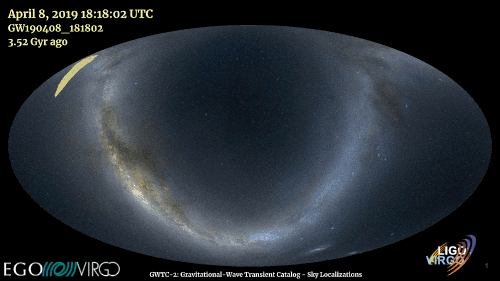Over 100 black holes detected by Virgo and LIGO in the first run of 2019

The classification and definitive analysis of the 39 events detected by Virgo and LIGO in the third observation period (which ran from April to October 2019) was published today on the ArXiv online archive. Most of these are black hole mergers, the characteristics of which, however, question some established astrophysical models and open up new scenarios. A likely merger of neutron stars and two probable ‘mixed’ neutron star-black hole systems were also detected in the same period.
It took a year of work and complex analysis by the researchers of the Virgo and LIGO scientific collaborations to complete the study of all of the gravitational-wave signals that were recorded by the Virgo interferometer, installed at the European Gravitational Observatory, in Italy, and the two LIGO detectors, in the US, during the data-taking period - called ‘O3a’ - which ran from the 1st of April to the 1st of October, 2019. Events included: 36 mergers of black holes; a likely merger of a binary system of neutron stars; and two systems that were most likely composed of a black hole and a neutron star. Among these, four “exceptional events” have, during the last year, already been published, but the catalogue released today provides, for the first time, a complete picture of the extraordinarily large number of recorded gravitational-wave signals and their sources. It represents a wealth of observations and data on the physics of black holes, barely imaginable until only a few years ago.
Scientific preprints
- Compact Binary Coalescences Observed by LIGO and Virgo During the First Half of the Third Observing Run
- Population properties of compact objects from the second LIGO–Virgo Gravitational-Wave Transient Catalog
- Tests of General Relativity with Binary Black Holes from the second LIGO–Virgo Gravitational-Wave Transient Catalog
- Search for Gravitational Waves Associated with Gamma-Ray Bursts detected by Fermi and Swift during the LIGO-Virgo Run O3a